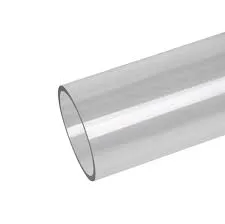Aug . 13, 2024 09:40 Back to list
Applications and Benefits of HDPE Pipe Couplings in Modern Piping Systems and Infrastructure Solutions
HDPE Pipe Coupling An Essential Component for Efficient Piping Systems
High-Density Polyethylene (HDPE) pipe systems have become increasingly popular in various industries due to their durability, flexibility, and resistance to corrosion. One critical component that ensures the effectiveness and reliability of HDPE piping systems is the pipe coupling. This article explores the significance, types, applications, and benefits of HDPE pipe couplings in modern infrastructure.
Importance of HDPE Pipe Couplings
A pipe coupling is a vital fitting that connects two sections of pipe, allowing for the seamless flow of liquids or gases. In HDPE piping systems, couplings provide several key advantages. They facilitate quick and efficient assembly of pipe sections, enabling the construction of extensive pipeline networks necessary for water supply, sewage systems, and industrial applications. Moreover, they ensure a secure and leak-free connection, which is crucial in maintaining system integrity and preventing environmental contamination.
Types of HDPE Pipe Couplings
There are various types of HDPE pipe couplings available to meet specific application needs. The most common types include
1. Mechanical Couplings These couplings utilize a mechanical locking mechanism to join two pieces of HDPE pipe. They are easy to install and can accommodate minor misalignments between pipes.
2. Electro-Fusion Couplings This type of coupling involves the use of electro-fusion technology, where heating elements embedded in the fitting melt the pipe ends upon application of electrical current, creating a strong bond. This process is highly effective and ensures a fully restrained connection.
3. Butt Fusion Couplings Butt fusion involves heating the ends of the pipe and coupling to their melting point, and then pressing them together. This method creates a homogenous joint, providing excellent strength and resistance to pressure.
4. Compression Couplings These are typically used in applications where disassembly is necessary. They work by compressing the pipe ends and creating a tight seal, making them easy to install and remove.
Applications of HDPE Pipe Couplings
HDPE pipe couplings are widely used across various sectors, including
hdpe pipe coupling

- Water Distribution They are used to connect pipes in municipal water supply systems, ensuring the safe delivery of potable water.
- Gas Distribution HDPE couplings are essential in natural gas distribution networks, where safety and leak prevention are paramount.
- Sewer and Drainage Systems In wastewater management, HDPE couplings facilitate the construction of reliable sewer systems, minimizing the risk of leaks and blockages.
- Irrigation Agriculture relies on HDPE pipe couplings for efficient irrigation systems, helping to conserve water and ensure crops receive adequate hydration.
Benefits of Using HDPE Pipe Couplings
The advantages of HDPE pipe couplings extend beyond their functional role in connecting pipes. They offer several benefits, including
- Durability HDPE is resistant to corrosion and chemical attack, ensuring longevity and reducing maintenance costs over time.
- Flexibility The flexibility of HDPE allows for easier installation, especially in challenging terrains where traditional piping materials might struggle.
- Cost-Effectiveness Due to their durability and low maintenance requirements, HDPE pipe couplings often lead to lower overall project costs.
- Environmental Friendliness HDPE is recyclable and minimally impacts the environment, making it a sustainable choice for piping solutions.
Conclusion
HDPE pipe couplings play a crucial role in the efficiency and reliability of modern piping systems. With a variety of types available to suit different applications, these fittings ensure secure connections that are resistant to leaks and damage. As industries continue to prioritize sustainability and cost-effectiveness, the significance of HDPE and its associated components will undoubtedly continue to grow, further solidifying its place in the future of infrastructure development.
-
PVC Grey Sheet for Extraction: Chemical Resistant & Durable
NewsAug.19,2025
-
Durable PVC Pipe Fittings for Plumbing & Irrigation Needs
NewsAug.18,2025
-
HDPE Steel Belt Reinforced Spiral Corrugated Pipe | High Strength
NewsAug.17,2025
-
HDPE Pipe Fittings: Durable, Leak-Proof Solutions
NewsAug.16,2025
-
Premium CPVC Sheet: High-Temp & Chemical Resistant Solutions
NewsAug.15,2025
-
Durable PPR Pipe for Hot & Cold Water Systems - Easy Install
NewsAug.14,2025

